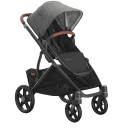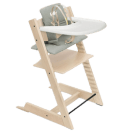
How Does Breastfeeding and Pregnancy Change Breast Tissue?
Breastfeeding and pregnancy are identity-defining stages in a woman’s life that can significantly affect the structure and function of breast tissue. As a result, it is essential to understand the changes that occur during these periods and how they impact breast exams. This knowledge can help healthcare professionals provide accurate diagnoses and treatments while empowering women to take control of their breast health. Let’s explore how breastfeeding and pregnancy alter breast tissue and the implications for breast exams.
How Do Breasts Change During Pregnancy?
Your breasts will undergo several changes during pregnancy in preparation for breastfeeding. These are some of the changes many mothers-to-be experience:
- Increase in cup size: One of the earliest and most noticeable changes is an increase in breast size. Increased blood flow, enlargement of milk ducts, and the growth of milk-producing cells all contribute to your growing cup size.
- Tenderness and sensitivity: You may experience breast tenderness, especially in the first trimester—it’s often one of the first signs of pregnancy.
- Changes in your nipples and areolae: Your nipples and areolae might become darker during pregnancy, and melanocyte-stimulating hormone (MSH) will make your nipples more prominent.
- Appearance of Montgomery’s glands: You may notice small bumps appearing on your areolae, called Montgomery’s glands. They secrete an oily substance that lubricates and protects your nipples during nursing sessions.
- Veins become more visible. Increased blood volume during pregnancy may make veins in your breasts more visible.
- Colostrum production: Later in pregnancy, you may notice a yellowish fluid called colostrum leaking from your nipples. Colostrum is the first milk produced by your breasts, and it’s rich in antibodies and nutrients, making it especially beneficial for your newborn.
- Stretch marks: As your breasts enlarge, you may develop stretch marks from stretching the underlying skin. Though stretch marks won’t entirely disappear, they lighten over time.
- Increased breast density: Breast tissue becomes denser from increasing glandular tissue and blood flow.
Hormonal shifts >>>insert link to Comprehensive Guide to Pregnancy Hormones publish TBD<<< influence breast changes during pregnancy, particularly increases in estrogen and progesterone. Every woman is different, and the degree and type of changes will vary widely among pregnant women.
Does Breast Tissue Change While Breastfeeding?
Congrats—now you’re a mom! Your breasts will continue to change as you breastfeed (internally and externally). Here are some of the key changes that occur:
- Glandular tissue increase: After childbirth, as you begin your breastfeeding journey, glandular tissue in your breasts will increase. This tissue is responsible for producing milk. The alveoli (tiny sacs within the glandular tissue) enlarge and fill with milk.
- Changes in fat content: The fat content in your breasts might decrease while breastfeeding, resulting in your breasts feeling less full or softer when not engorged with milk.
- Breast size: Breast size increases during pregnancy and breastfeeding because of your expanding milk duct system, but it varies from woman to woman (and even pregnancy to pregnancy!). Some women experience a significant increase in breast size, while others notice only minor changes.
- Engorgement: In the early days of breastfeeding—or if you miss a feeding—breasts can become engorged, making them feel hard, tight, and painful.
- Leaking: Leaking breasts are common in the days immediately following childbirth (though it can continue throughout your breastfeeding journey). Leaking can occur for various reasons—your mature milk first coming in, having a full supply, missing a feeding, or simply thinking of your baby can result in leaky breasts.
- Breast lumps: You may notice lumps in your breasts while lactating. They are typically the result of engorgement, plugged milk ducts, or mastitis. If you notice any new or unusual lumps, it’s essential to be evaluated by your healthcare provider to rule out other causes.
- Breast sensitivity: You may experience increased sensitivity or tenderness in your breasts, especially during the postpartum period.
- Lopsidedness: Many women have one breast that overproduces compared to the other, giving a lopsided appearance. Fortunately, your breasts will likely become more proportional once you begin weaning.
- Breast sagging: Over time, the repeated filling and emptying of milk (and the effects of pregnancy and gravity) might change the shape and firmness of your breasts, leading to sagging. But it’s not just breastfeeding that’s to blame—age, genetics, and the number of pregnancies also play roles.
After weaning, your breast tissue undergoes involution: The milk-producing structures in your breasts shrink, and your breasts may return to your pre-pregnancy size or become slightly smaller or larger. Your breast composition might also shift, with a potential increase in fatty tissue and a decrease in glandular tissue.
Should You Do Breast Self-Exams While Breastfeeding?
Research hasn’t demonstrated a clear correlation between breast self-exams (BSEs) and early cancer detection, and the American Cancer Society no longer recommends BSEs as part of your routine breast cancer screening schedule. But that doesn’t mean you should never do BSEs—especially if you’re high-risk. BSEs can help you become familiar with how your breasts feel and promote general breast awareness.
If you choose to continue with BSEs while lactating, you must be aware of the limitations of BSE while breastfeeding. Your breasts will naturally feel different than when you’re not lactating. Here are some things to consider about breast self-exams while you’re nursing:
- Routine breast changes while lactating: When breastfeeding, it’s not uncommon to have lumpy breasts because of increased glandular tissue. You may also experience occasional engorgement, clogged milk ducts, cysts, or mastitis. Familiarizing yourself with these regular changes can help you distinguish between usual breast texture and potential irregularities.
- Best time for a BSE: While breastfeeding, it helps to do a breast self-exam after nursing or pumping when your breasts are empty.
- Look for persistent changes: While breast lumps are common during breastfeeding, a lump that doesn’t go away after feeding or persists may be cause for further evaluation.
What if You Find a Lump While Breastfeeding?
Finding a lump in your breast is always worrying. Fortunately, most lumps discovered in a lactating breast are an inflammation (typically mastitis or a blocked duct) or milk-filled cysts and will subside with treatment.
Remember, breast self-exams have limitations—especially while lactating—and are not a substitution for clinical breast exams by a medical professional or imaging studies, like mammograms and sonography (when recommended). If you find any concerning or persistent changes during a self-exam, it’s essential to consult with your healthcare provider. They can help determine if the change is related to breastfeeding or if further evaluation is needed.
Does Lactating Affect Breast Screening Methods?
It is generally safe to have mammograms, ultrasounds, and MRIs while breastfeeding (it’s not typically recommended for BRCA+ women under thirty), and these screenings do not affect breast milk. But, because lactating breasts are more dense, interpreting the results is more complicated. If your physician recommends a mammogram or sonogram while you’re lactating, doing the screenings at breast imaging centers with dedicated breast radiologists can be helpful.
Make sure to discuss the best timing of mammograms or other routine breast screenings with your healthcare provider.
Does Breastfeeding Reduce Cancer Risks?
Breastfeeding doesn’t just benefit your baby’s health—it benefits yours, too. Extended breastfeeding (twelve months provides the greatest protection) reduces the risk of breast and ovarian cancers. And it doesn’t need to be a year of consecutive breastfeeding, either (twelve months split between siblings has the same positive impact).
Why? One reason may be that breastfeeding causes hormonal shifts that delay the return of your menstrual cycle, reducing your exposure to estrogen, a hormone linked to increased breast and ovarian cancer risk.
Finding What’s Right for You
Albee Baby is the oldest family-owned specialty baby shop in the US, and we pride ourselves on providing our customers with the best assortment of baby products anywhere, at fair prices, always. We’re committed to being an inclusive resource for parents and hope you feel empowered to find the right baby gear for your family. Still have questions? Feel free to contact our baby gear experts at 877.692.5233 or info@albeebaby.com.
DISCLAIMER: THIS WEBSITE DOES NOT PROVIDE MEDICAL ADVICE
The information, including but not limited to text, graphics, images, and other material on this website, is for informational purposes only. No material on this site is intended to be a substitute for professional medical advice, diagnosis, or treatment. Always seek the advice of your physician or other qualified healthcare provider with any questions regarding a medical condition or treatment, and never disregard professional medical advice or delay in seeking it because of something you have read on this website.
 Car Seat Sale
Car Seat Sale
 Stroller Sale
Stroller Sale
 Home Sale
Home Sale
 Feeding Sale
Feeding Sale
 Activity & Entertainment Sale
Activity & Entertainment Sale
 Bath & Potty Sale
Bath & Potty Sale






 Car Seats
>
Car Seats
>
 Strollers
>
Strollers
>
 Cribs
Cribs
 High Chairs
High Chairs
 Baby Carriers
Baby Carriers
 Travel Cribs & Playards
Travel Cribs & Playards
 Wagons
Wagons
 Home
>
Home
>
 Bath & Potty
>
Bath & Potty
>
 Diaper Bags & Backpacks
Diaper Bags & Backpacks
 Toys
>
Toys
>
 Gifts
>
Gifts
>
 Clothing
>
Clothing
>

















 Infant Car Seats
Infant Car Seats
 Convertible Car Seats
Convertible Car Seats
 All-in-One Car Seats
All-in-One Car Seats
 Booster Car Seats
>
Booster Car Seats
>
 Travel Systems
Travel Systems
 Car Seat Accessories
Car Seat Accessories
 Single Strollers
Single Strollers
 Double Strollers
Double Strollers
 Single-to-Double Strollers
Single-to-Double Strollers
 Lightweight & Compact Strollers
Lightweight & Compact Strollers
 Jogging Strollers
Jogging Strollers
 Bicycle Trailers & Child Seats
Bicycle Trailers & Child Seats
 Stroller Accessories
Stroller Accessories
 Stroller Frames
Stroller Frames



































